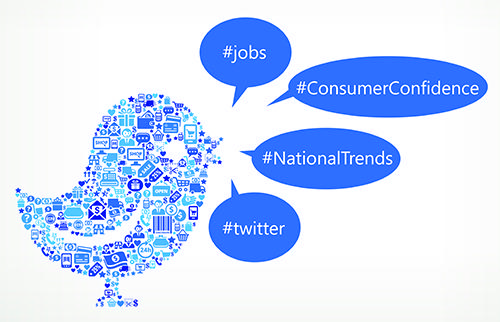March 15, 2019
Can Twitter Tell Us About National Trends?

In a paper published recently in the Public Opinion Quarterly, SRC's Fred Conrad, with lead author Josh Pasek and co-authors Yanna Yan, Frank Newport, and Stephanie Marken, explored the ways that Twitter data are generated to find ways to predict when social media and survey data provide similar information in the area of consumer confidence. An important difference between national surveys and Twitter is that surveys use scientific methods to choose a sample that is representative of the U.S. whereas Twitter may only be representative of Twitter users. That is, does information from Twitter tell us something about national trends or only about trends within the population of Twitter users.
Almost since the advent of social media, scientists have recognized its potential as a source of social information for research. For example, flu epidemics can be followed by tracking mentions of sick, sneeze, and cough on Twitter. An open question is when and how social media and survey information are aligned. This is important because obtaining information from social media is much less expensive than collecting information through surveys. Understanding more about when and how social media information provides a useful complement and potentially a supplement for survey information may pave the way for wider usage in scientific discovery.
To understand this more, these researchers compared data from the Michigan Surveys of Consumers and other data sources with information from Twitter under two conditions:
- A simple comparison of Twitter with national survey data
- A comparison of Twitter with survey data that have been weighted to reflect Twitter users
Following previous research showing that Tweets with the word 'jobs' in them tend to track with measures of consumer confidence, the researchers used this same strategy in their present study. They compared survey data to Twitter data over a 5 year period from 2008 to 2013, that is over the period of the Great Recession.
Some of their findings support the idea that under certain conditions, social media information indicative of consumer sentiment does tend to mirror that obtained from surveys. These conditions appear to be highly changeable, however. The alignment of survey data and social media information on consumer confidence is closer under more volatile economic conditions. It may be that Twitter is tapping into public attention to newsworthy changes, such as the dramatic events surrounding the Great Recession. Interestingly, when the researchers adjusted the data to reflect the Twitter using population, the alignment of survey data and Twitter data was no closer. At least for consumer sentiment, Twitter users over this time appeared to be in line with the Nation as a whole.
Pasek, Josh, H. Yanna Yan, Frederick G. Conrad, Frank Newport, Stephanie Marken (2019). The Stability of Economic Correlations over Time: Identifying Conditions under Which Survey Tracking Polls and Twitter Sentiment Yield Similar Conclusions. Public Opinion Quarterly, 82(3): 470-492.